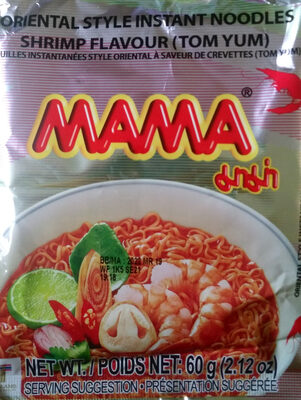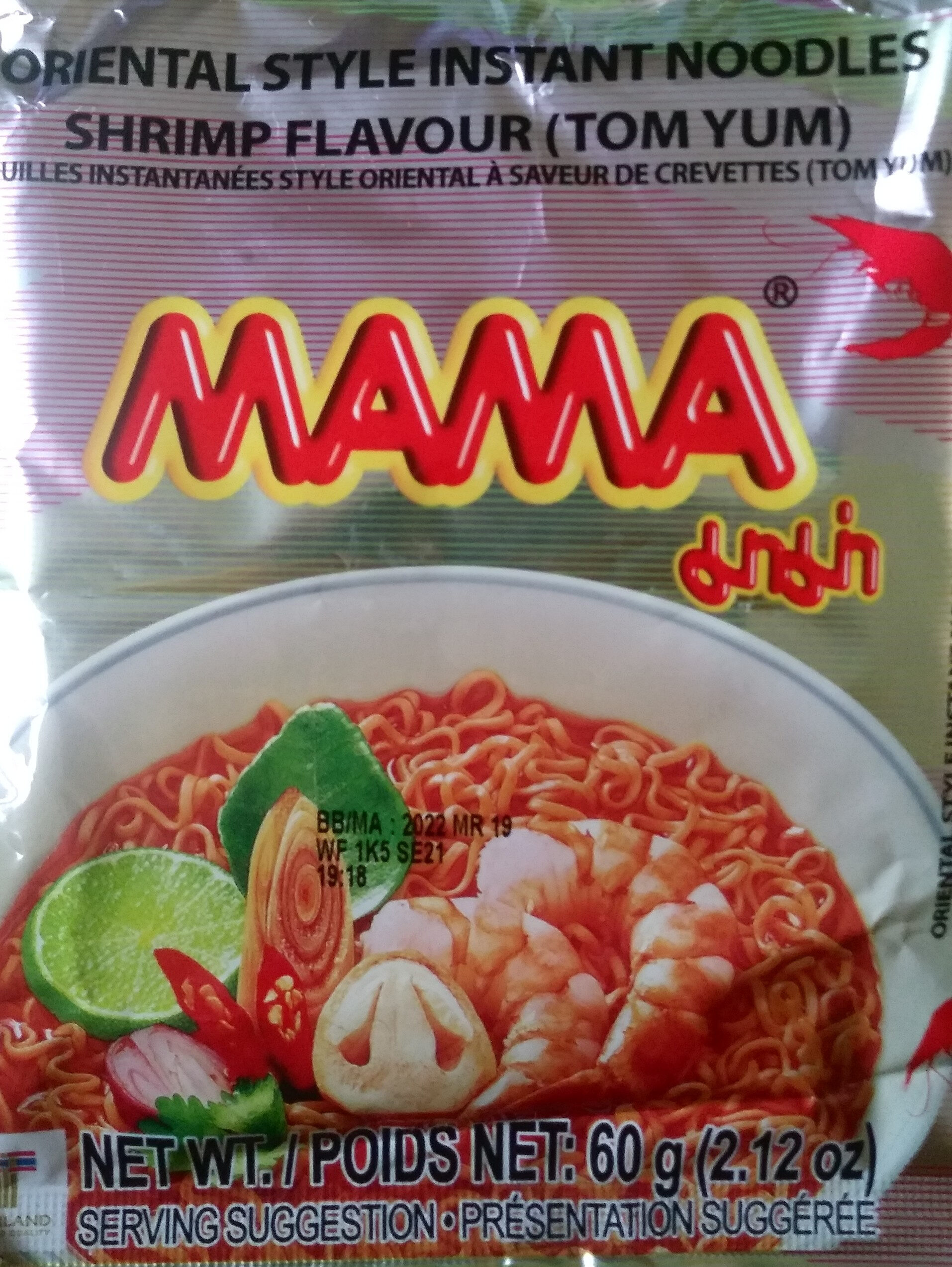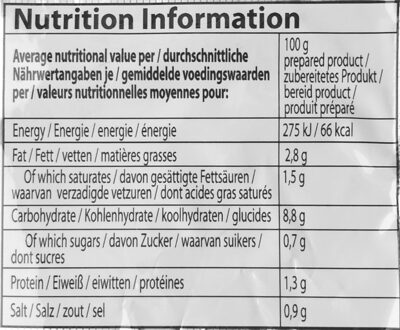Instant Noodles Shrimp Flavour (Tom Yum) - Mama - 60g
This product page is not complete. You can help to complete it by editing it and adding more data from the photos we have, or by taking more photos using the app for Android or iPhone/iPad. Thank you!
×
Barcode: 8850987101083 (EAN / EAN-13)
Common name: Instant Noodles Shrimp Flavour (Tom Yum)
Quantity: 60g
Packaging: fr:sachet plastique
Brands: Mama
Categories: Plant-based foods and beverages, Plant-based foods, Meals, Dried products, Pastas, Dried products to be rehydrated, Noodles, Soups, Dried meals, Instant noodles, Dehydrated soups, Instant noodle soups, Dehydrated Asian-style soup with noodles
Labels, certifications, awards:
Halal
Manufacturing or processing places: Thailand
Link to the product page on the official site of the producer: https://www.mama.co.th/en/products-expor...
Matching with your preferences
Report a problem
Data sources
Product added on by openfoodfacts-contributors
Last edit of product page on by prepperapp.
Product page also edited by allergies-app-chakib, charlesnepote, foodvisor, gourmet, inf, kiliweb, prysm, realsdqlpmw, tacinte, toon, yuka.WDVBc1NZMGRoOE1Zc3ZRYTJFeko4TjEweElDNWNuUHVjTzVLSVE9PQ, yuka.Yjc4YUU1USsrL0lWdC9FQi9Eblp4NDllbjYycWMwT09FdlJJSUE9PQ, yuka.ZWFaUU1vTWRnT1VMb2ZZenJpbk85TWhieTRhSllHMjJLc28vSUE9PQ, yuka.sY2b0xO6T85zoF3NwEKvlkJ8CNjd-jaeZxnTgG6W6vmSN8bsS4BV-qfBa6o, yuka.sY2b0xO6T85zoF3NwEKvlkpqb8bZmTjaMTftvkTT7O6SCKTzPI1Ow9TeIqg, yukafix.










